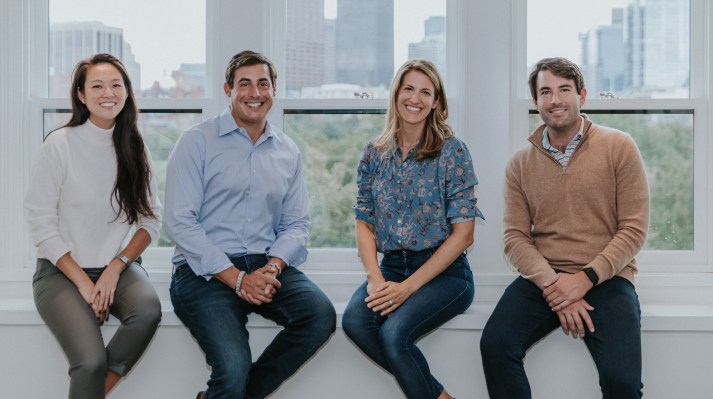
New venture capital firm Asymmetric Capital Partners is putting $105 million to work in business-to-business startups, recently closing its first fund that was also oversubscribed.
Rob Biederman, founder and managing partner, started the firm earlier this year after founding and leading his own company, Catalant Technologies, a freelance marketplace. Joining him are Sarah Unger Biggs, Sam Clayman and Nancy Chou.
The foursome have previous connections: Biederman and Unger Biggs were college friends and worked together at Bain Capital and Goldman Sachs, while Clayman and Chou knew each other in high school.
“Building a company is a lonely activity and it is nice to know someone you can turn to for traditional guidance,” Biederman said. “We spoke to founders who talked about negative VC experiences, and it occurred to me that some firms aren’t as empathizing, so we set out to build a firm where we can work shoulder to shoulder with founders to build their companies.”
The technology-focused firm is jointly based in New York and Boston and invests in seed to Series C-stage business-to-business companies across four theses: the digitization of legacy industries, next-generation software and business tooling, marketplaces and the disruption of time and place that lead to changes in work, retail and healthcare.
Biederman, while he was still a one-man shop, largely raised the fund during the spring and attracted investment from family offices and high net worth individuals who have private equity and venture capital backgrounds, Unger Biggs said.
The firm is both leading rounds and co-investing with other firms and aims to write check sizes from $250,000 to $10 million and has already gotten to work putting the capital to use in over a dozen startups, including recruiting platform Canvas, Firstbase, a remote work software and fintech company Clearco.
“Asymmetric is embracing technology at a place where a bunch of sectors are getting digital rails, leading to more speed and accuracy of delivery, advanced analytics and data capture,” Biederman said. “Connected devices are creating a massive new data set and people are bundling software to make use of that data.”
Credit: Source link



